Art by Subtraction. Eat, Consume and Devour: An Essay on How & Why I Wrote Lonely Men Club
23.04.18

Lonely Men Club by Mike Kleine is the first volume from Inside the Castle’s “Castle Freak Remote Residency for Generative Digital Composition.” This simply means it was a book of precisely 100,000 words that was written in 5 days. The Castle Freak is desirous of this quantity and duration for two reasons. First, because such an undertaking is nearly impossible for an unassisted human—perhaps only matched historically by Balzac in his most peak sprint mode (30 words a minute for 15 hours a day)—and necessitates the introduction of computational methods into the creative process. Second, because one of the tenets of book-objectness that Inside the Castle strives for—distracted reading—is exceptionally fostered by long books. Literature’s richness is in its emptiness, the structural hollowness in the picaresque of Cervantes and Sterne that gives over the entire being of a book to the thickness of its language, not the fidelity of its momentum. The iterative and uncertain quality of Lonely Men Club’s computational origins is a loving reinvigoration of literature’s cultural project.
-John Trefry, Inside the Castle
I wrote a 100,000-word book in five days about the Zodiac Killer and titled it Lonely Men Club. I used a combination of Microsoft Word, Microsoft Publisher, Notepad, Notepad + +, my local library, Propellerheads Reason Essentials 10, Twitter, iTunes, Google Chrome and Twine. I took three days off work, made sure it ran into the weekend, and pretty much slept on the couch (right next to the computer) for most of those five days. The sleeping part felt burdensome, as I’d wake up and pick up exactly from where I’d left off, almost like I was doing what I was doing only because I had to. And in a way, I did. I only slept because my body was telling me to sleep. And there’d be instances where I would stand there and literally stare at the screen for maybe seven or eight minutes (I have blue-blocking spectacles so it’s chill) and do nothing. I tried to break up the monotony of it all by periodically posting updates via Twitter (but even that only went so far). I’d watch YouTube videos and sing songs I thought I knew. I wrote and recorded nine tracks. And with all of this, I never shut off my computer, so, naturally, everything eventually crashed like three times. I think I almost cried two of those times. But all of it was pretty humbling. I love writing. Like, I am obsessed with writing. I like to think about writing pretty much every single day. I am so into writing that sometimes, I’ll write down words onto a piece of paper and throw everything away just so I can say I satisfied my urge to write. No, that’s not true. It’s more like, the way I work, I’ll be watching a movie or listening to a song or writing down notes, and then something will compel me to write. It’ll be the purple sky in the film Miami Vice by Michael Mann. Or it’ll be the sound of the warbly plucked harp in Saudade by r beny. Really, I write only because the world forces me to write.
Every single book I have ever written explores a specific concept, and I try and tell a story with that concept. For example, Mastodon Farm, my first book, it’s about celebrity culture. Arafat Mountain is about the numinous. And Kanley Stubrick is about love and the concept of identity. I understand (and have also come to accept) that I will never fully comprehend everything. This is, for me, the first step toward achieving some modicum of understanding or, at the very least, acceptance of my / our fate (as humans). I will never be able to complete all of my research. Everything will forever remain unfinished. I am not going to live forever. Twenty-four hours in the day is just not enough time to do anything and everything. All of these realizations, together, force me to complete as many projects as I am able to complete in this lifetime. If reincarnation is real (and I am able to come back as a human and am able / allowed to write again) great! If not? Great, also! Because I know I am going to (eventually) die, I write so that—after everything’s been said and done—I can at least leave something behind that asks questions.

Lonely Men Club is about Zodiac Killer, who in the book, is a supernatural entity. Essentially, for me to be able to understand Zodiac fully (or as much as I am able to), I had to turn him / (her)(?) into an outsider / itinerant entity. In the book, Zodiac exists within the confines of our (forever) shape-shifting universe, as a temporarily trapped(?) figure, until they are able to depart from this realm & conquer / acquire another (his / her true) / final(?) form. Furthermore, Lonely Men Club adheres to a four-dimensionalist / eternal interpretation of time. I truly believe there are cosmic forces at play in this story and do not want to dumb anything down for the sake of comprehension or relative understanding. The entire text is supposed to function as hyperbole. This is a celebration of the banality & absurdity of everyday life, coupled with sinister & dark overtones, all throughout the text. It’s also about pataphysics.
The story takes place in the same universe as my other texts, all of them. Everything I write takes place in the same universe. I am unable to leave the world (or worlds) I have created. It is important to note: the universe in my texts is very similar to our own, though there are key differences. There is, for instance, an alternate geography. Baltimore and Tokyo are not that far apart from each other on a map (and this is evidenced in my first book, Mastodon Farm). There are many gods that exist and people  pray to them, asking for different things. Immortality is also a very real thing. Godzilla is always (and has become) a(n accepted) threat that is always happening. Sometimes, a character will look up into the sky and see words. Thing is, a lot of these realities are implied. I am not interested in world building. When I write, in this universe, everything that happens happens because it’s always happened and will continue to happen—nobody questions any of it. Everything is in media res. Like many other things in our own universe. The air we breathe, the fact that something like lightning exists, volcanos exploding, oceans burning… Something is always happening at the same time as something else. Time is a fairly complex concept. And we take all of this for granted because that’s just the way things are. Zodiac may run into a character from Mastodon Farm. They may visit a location that was only briefly discussed in Arafat Mountain. They may also interact with characters from a book I haven’t written yet! And all of this abides to William James’ theory of a pluralistic universe.
pray to them, asking for different things. Immortality is also a very real thing. Godzilla is always (and has become) a(n accepted) threat that is always happening. Sometimes, a character will look up into the sky and see words. Thing is, a lot of these realities are implied. I am not interested in world building. When I write, in this universe, everything that happens happens because it’s always happened and will continue to happen—nobody questions any of it. Everything is in media res. Like many other things in our own universe. The air we breathe, the fact that something like lightning exists, volcanos exploding, oceans burning… Something is always happening at the same time as something else. Time is a fairly complex concept. And we take all of this for granted because that’s just the way things are. Zodiac may run into a character from Mastodon Farm. They may visit a location that was only briefly discussed in Arafat Mountain. They may also interact with characters from a book I haven’t written yet! And all of this abides to William James’ theory of a pluralistic universe.

Writing about the Zodiac Killer is not a new idea for me either. My first foray was in 2010. I wrote a short story featuring the Zodiac Killer for a workshop but changed the name to Captain Nero. I did this because I was afraid people would react negatively to a character like the Zodiac Killer. In the story, Zodiac travels through time and kills people. The time travel aspect is supposed to explain why Zodiac has never been caught, like, in real life. And Zodiac never time travelled to the past or the present, rather, they travelled to parallel timelines, committing the same or similar acts of murder, but in different ways, for their own amusement. The character of the Zodiac Killer also appears in my 2014 novel, Arafat Mountain, doing the same thing. I am after spiritual truths and obfuscated memories. If you (as the reader) have surface-knowledge of Zodiac’s mythos, that essentially provides an extra layer / depth to Lonely Men Club (but at the same time if you don’t, that’s fine, also).
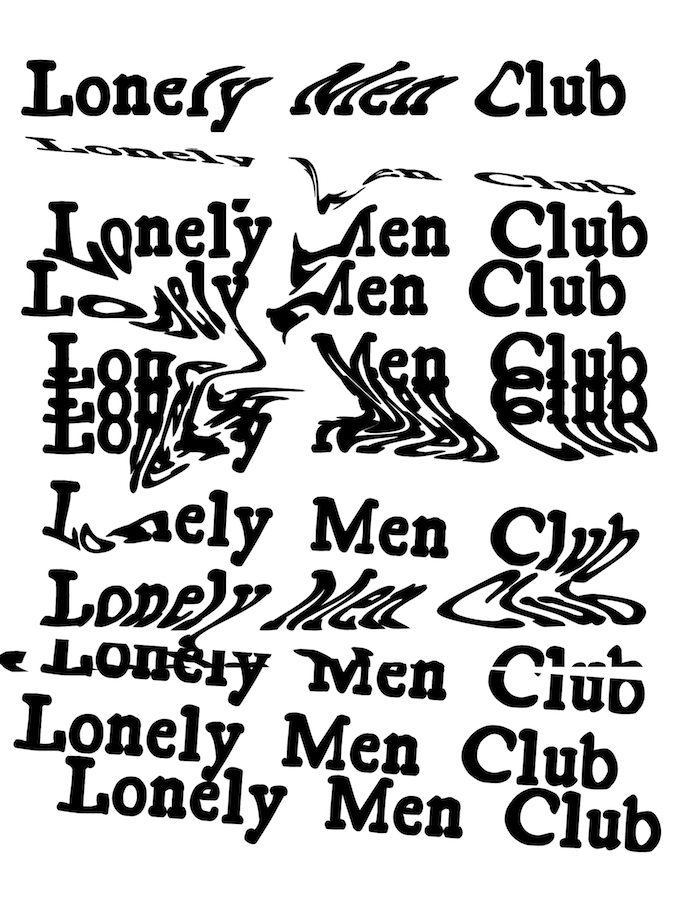
Lonely Men Club comes from the Lawrence English record, Lonely Women’s Club. I have never listened to the record. I am super critical about my book titles and don’t want to say any author ever uses a throwaway title, but it is very important to me that I love a title to death. Originally, my plan had been to come up with a title using only two words. The words would be randomly generated during the five-day composition period… I quickly realized I am way too OCD to leave the title of my next book up to chance. I was going to call the book Zodiac! Zodiac! Zodiac! at one point (and this title has its own set of merits) but I thought it was too in-your-face and not flowery enough. Instead, I spent a lot of time making sure the generative aspect of the text was actually, um …generative. So—enter Twine.

Twine is an “open-source tool for telling interactive, nonlinear stories.” Most people use Twine to write Interactive Fiction (also known as IF). I used the program to write Lonely Men Club. In Twine, you will normally write a sequence and provide the reader with a few options (ie: open door, turn left, etc.). So pretty much, it’s great for creating Choose Your Own Adventure-style works. In working with Twine, I discovered another function—one that not too many people talk about (or even use, it seems). Twine has the ability to pick values at random. This means a sentence that is made up of several words or concepts or ideas, can then immediately be transformed into something else, every single time it is generated. The more values you plug in, the more the text morphs and develops into something completely new and different! All I get to set are the parameters. Everything else is up in the air. This aspect of Lonely Men Club is what intrigued me the most. There is literally no way for me to predict how the sequence of vignettes would unfold; and that was part of the mystique. The novel as a whole is an experience. There is some type of narrative inside the text, naturally, but it’s deep within. The narrative itself is the generative part. Think about this…
As I experimented with different permutations, I researched generative literature and became inspired by different texts, namely: Nick Montfort’s World Clock, Harry Mathews’ Singular Pleasures, Roberto Bolaño’s Antwerp and even Robert Pinget’s Fable. (NB: Not all of these texts are generative). (There’s also the OuLiPo movement and Les Éditions de Minuit that I enjoy very much, so Lonely Men Club is informed by all of that as well). With Lonely Men Club, I wanted to create a work that extended beyond the limited physicality of the novel. I wanted to move past barriers and present an object the reader could begin reading from any page. To generate my text, I made sure that with any particular set of variables, a number of different scenarios could play out. This was done for several reasons.
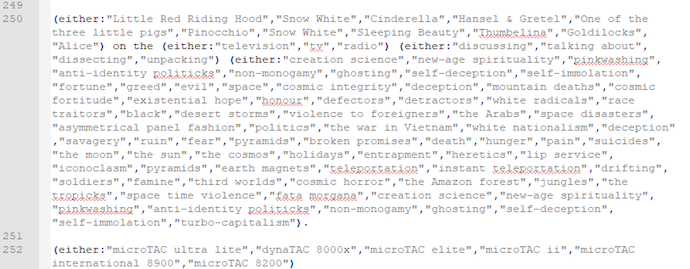
In creating the code for Lonely Men Club, I wanted to plant seeds or ideas into the brain of my version of the Zodiac Killer. I wanted to think of the character as this primitive AI I’d created that was telling me all of its inner thoughts, one after the other. And then my job, of course, was to scramble and write down as much of it as possible, while at the same time respecting and embracing any and all imperfections. There is so much world building happening on the back-end of Lonely Men Club that it truly became its own eco-system—which I am only slightly responsible for. There is a certain repetition of words, a repetition that embraces the Jamesian theory of transformational meaning. Essentially, you repeat a word or words enough times, and the meaning or meanings cease to have meaning and become something entirely different. Something that sounds like it doesn’t make sense suddenly makes sense. And likewise, a phrase or concept that seems to make sense—repeat it enough times, and it just becomes words that lose their meaning.
Gertrude Stein once said about her writing, “I took individual words and thought about them until I got their weight and volume complete and put them next to another word.” No word is wasted in Lonely Men Club. Due to the generative quality of the text, certain moments may, at first glance, appear to follow the same rhythm or pattern or cadence as a previous moment (which very well may be the case) but I urge that you, as reader, discard trained interpretation of text and instead relish in the actual sequence of words. The text is meant to be reflexive. Art by subtraction. Eat, consume and devour; all three allude to something similar but each does not mean the same thing. Much of the writing style in Lonely Men Club is influenced by e e cummings and Etel Adnan. There’s also a bit of Susan Howe & Anne Carson.
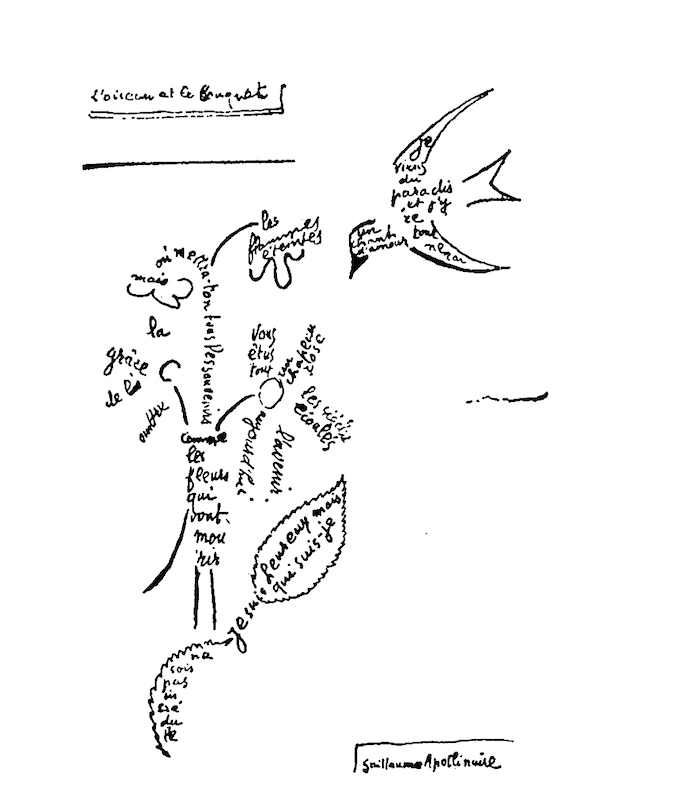
The creation of brand new words and on-purpose misspellings is something I have been doing since Arafat Mountain. I particularly enjoy how when two (or sometimes even three) seemingly unrelated words are joined together, they create a new synthesis. In Lonely Men Club, all of this is amplified to the nth level. I have to applaud the texts of e e cummings, Pierre Abidi and Susan Howe for informing some of how Lonely Men Club was written. Helmut Schmid & Mira Schendel also. Guillaume Apollinaire, I guess, is the godfather of all of this visual poetry stuff too, but I am not really a big fan of his actual poems. Something that is maybe interesting: while reading Lonely Men Club, you’ll notice the font size changing, a lot. This, I wish I could say was done on purpose (or for a reason). The simple truth is, it was my first time using Microsoft Publisher, I did not 100% know what I was doing. Anytime I copy and pasted a block of generated text (from Microsoft Word to Microsoft Publisher), depending on the number of words I was pasting, the entire section would automatically resize and decide a font size for me. Since then, I have learned how I could have controlled this.
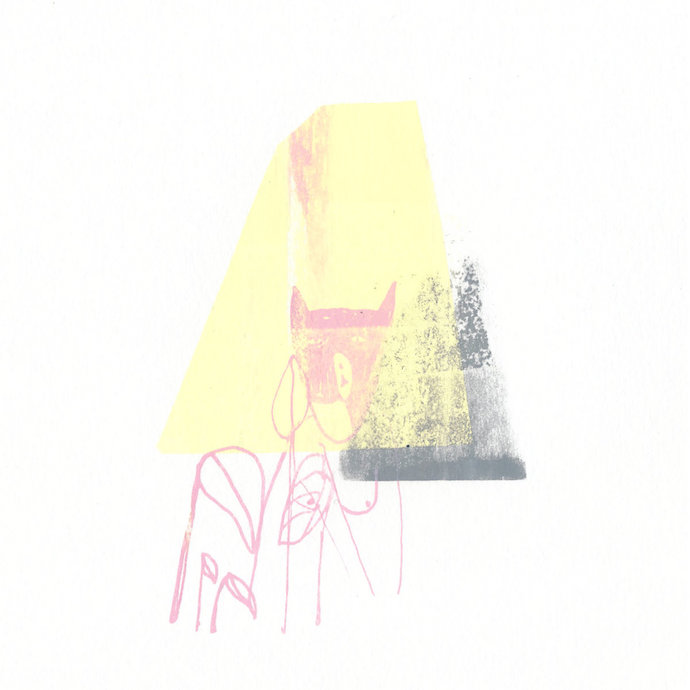
Lonely Men Club, for me, probably has been the hardest text to write. (Before this, it was Arafat Mountain). I am the type of writer who likes to spend a lot of time on whatever it is I am creating (don’t we all?). I also like to cut a lot from my work. I could write an entire text in under a month, but then spend the next two years editing and editing and editing (essentially forever). With this project, the challenge was one of speed and endurance. I had to not only write an entire book in five days, but also make sure the text was 100,000 words. Most of my books, the first drafts, are generally longer than the final works. I tend to overwrite and spend the following months (or year(s)) cutting the excess. I like to ask questions in my books. I feel like I have failed, maybe, if, after reading one of my books, you can walk away saying, “Yeah, no—I totally got all of that. Everything absolutely made sense. I have zero questions.”
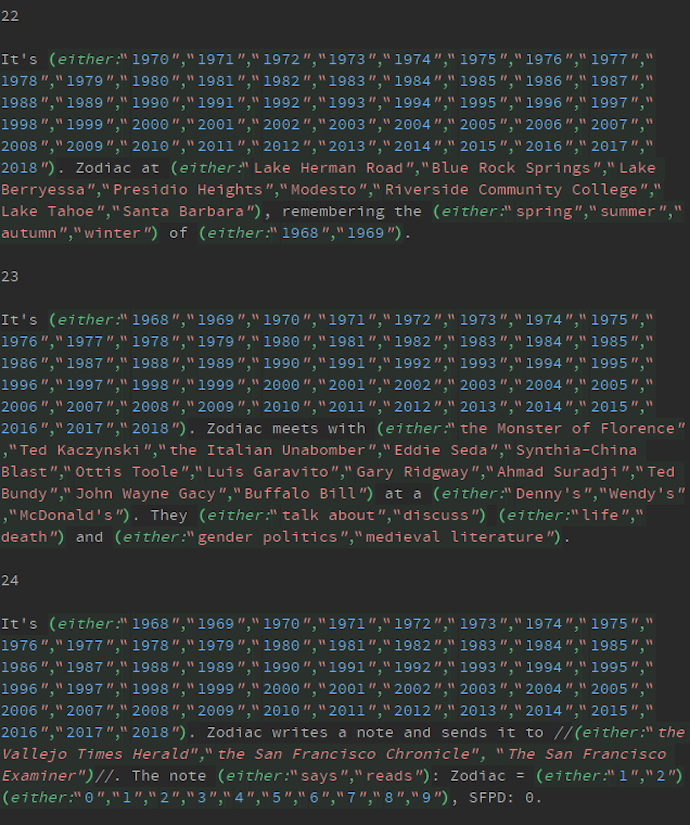
I was originally going to separate the text by year. Beginning in 1968 and then ending in 2018, but I realized this wasn’t really serving any real purpose. I did this, originally so the text could, in essence, become more digestible. Again, I have now realized this was an unnecessary restriction, as I was effectively moving away from a true four-dimensionalist interpretation of time. I also wanted the entire text, for each section, to just be one giant wall of text (not justified either). I realized I didn’t like this aesthetic and opted, instead, for a layout not too different from what you’ll find in a David Markson text. I truly want the text to be something you can pick up and begin reading on any page (think Hopscotch by Julio Cortázar or even World Clock by Nick Montfort). I am also a big fan of Edouard Levé and find his work, Autoportrait to be riveting. In a sense, Lonely Men Club attempts to tap into the same sort of mind-state as Autoportrait.

In Arafat Mountain, the vignette format is loosely based off Bolaño and Markson. I mined from Bolaño in the sense that each page was restricted to the single paragraph format. No separations. And I enjoyed this way of working, as the restriction allowed for an interesting approach to storytelling. As part of the writing process, I always spend a great deal of time researching the way text looks on a page. I compare things like regular text and justified. I compare books of prose to books of poetry. I speak with editors, copy editors, authors, typesetters and typographers. I read books on the aesthetics of text and fonts and typography. I gather all of my favourite books (as-in, the books I enjoy looking at the most) and think about what I like about these books. I sit and think about these things for a long time. I read interviews of poets and novelists and visual artists to try and gain some insight to their process. I always want to do something that is not just going to be standard. I want to become as involved as possible with how the book is going to look on the inside. For Lonely Men Club, it was my intention, after the five days, to deliver a book that was ready to print, and that I would not be able to change; so all of this—writing Lonely Men Club—has been different for me.
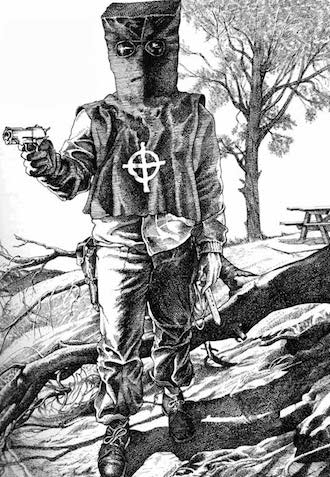 There are moments within the text where Zodiac tries on clothes (and here’s the thing, what may seem mundane is actually made fantastical). High fashion in my texts tends to blur the line between what a man may (or is allowed to) wear and what a woman should be wearing. Right now, we live in a time where this still (sort of) matters. 20,000 years from now, nobody will care about this distinction. Ideally (and arguably) I could say that true high fashion, you know, haute couture, does not have a specific gender. Whether it is in the fabrics or textures or different types of cuts, true high fashion does not belong to the pleb—average person—which is why it is high. High fashion is utopian in that sense, though I hate to use that term, utopian. Zodiac, here, pretty early on, is established as a sort of quasi-deity and exalted to a level that is different than most. I thought: a character wearing a combination of both men and womenswear would be indicative of the sort of transmutation occurring internally throughout the entire text, but then, at that point, expressed externally. I focus on the fashion here because the fashion, in Lonely Men Club, isn’t really about the fashion.
There are moments within the text where Zodiac tries on clothes (and here’s the thing, what may seem mundane is actually made fantastical). High fashion in my texts tends to blur the line between what a man may (or is allowed to) wear and what a woman should be wearing. Right now, we live in a time where this still (sort of) matters. 20,000 years from now, nobody will care about this distinction. Ideally (and arguably) I could say that true high fashion, you know, haute couture, does not have a specific gender. Whether it is in the fabrics or textures or different types of cuts, true high fashion does not belong to the pleb—average person—which is why it is high. High fashion is utopian in that sense, though I hate to use that term, utopian. Zodiac, here, pretty early on, is established as a sort of quasi-deity and exalted to a level that is different than most. I thought: a character wearing a combination of both men and womenswear would be indicative of the sort of transmutation occurring internally throughout the entire text, but then, at that point, expressed externally. I focus on the fashion here because the fashion, in Lonely Men Club, isn’t really about the fashion.
Lonely Men Club is hard to read, I would imagine. And I mean this both figuratively and literally. Some of the text is so small it is nigh impossible to read. The format of the book, how everything is laid out and how the text looks on the page, is representative of and inspired by Zodiac’s ciphers. At the same time, the mystery of the Zodiac is still a mystery. Lonely Men Club is erasure / smudge poetry with elements of collage / concrete poetry. I did not have much control over this, as much of it came as a result of process. The text itself is made up of a series of moments. These moments are prompts I have created that sort of self-replicate. And with this, copycat sentences are something I feared might happen, initially, but I spent a great deal of time setting several parameters to ensure, to the best of my ability, that copycat sentences would not occur. Sentences should not be nonsensical either (tho I do adopt the style of e e cummings where certain words are paired with a descriptor to create a completely new word; this is by choice). Above all, every sentence is a thought experiment, meant to inform and guide the story’s primary timeline (where there are also other timelines). The idea that all of this has already happened before, Zodiac knows and exploits in the novel. Also, the notion that the past, present and future are all happening at the same time opens doors to a new way of storytelling I hope I am able to somewhat completely harness and use to the text’s advantage. More than anything else, the beauty of this project is that I have already gone through a dozen potential scenarios and paths and each has helped shape Lonely Men Club into the final text. You think something is going to work extremely well and then realize it’s one of those ideas that sounded so much better on paper than in execution. It’s sometimes frustrating but also, no moment is ever wasted.

I cannot say there is a certain type of reader who will understand Lonely Men Club (or any of my other texts), more than another. I do recognize that on my part, I am asking that each reader put forth a bit of effort when reading my texts. For instance, E.G. Cunningham (in a 3:AM MAGAZINE review / dialogue she wrote on Kanley Stubrick) suggested, “There is an element of erasure …of history, geography, selfhood, and language,” in my texts. It’s the research. The behind-the-scenes stuff. All of this information manifests itself in my writings (whether I want to or not), just as much as one person’s life experience(s) can inform another’s. The thing is, I don’t usually write an essay about the research stuff. This is my first time talking, in great detail, about my process. Perhaps a post-mortem of sorts should become a part of my method with every new book?
But what is the book? What is text? What are words on a page? What does arrangement and placement on a page do to story and narrative? What even is narrative? What does the physicality of text equal in the real world? I urge that you ask all of these questions not only while (or after you’ve read) Lonely Men Club but moving forward, with any other sort of text. I want to raise awareness about the potentiality of the book. I want us to think differently about what it means to experience the book as physical object. I want us to wonder why we have books in our homes. A thing that takes up space, real estate. It’s just tree stuff pulled & bound together and then inked, right? How much can something that is so simple, affect? Inside the Castle is unique in the sense that how it views the book, like, the physicality of it, should not be seen as a method of escapism or an object whose sole purpose is to tell a story. The book is a physical object that was created using different types of energy and the experience of touching and smelling and reading the physical book is not only different from reading a Kindle or PDF but there’s also an energy transfer that occurs. Allowing the physical object of the book to breathe is perfect for a project like Lonely Men Club. I did everything I could, to try and make Lonely Men Club as palatable as possible.
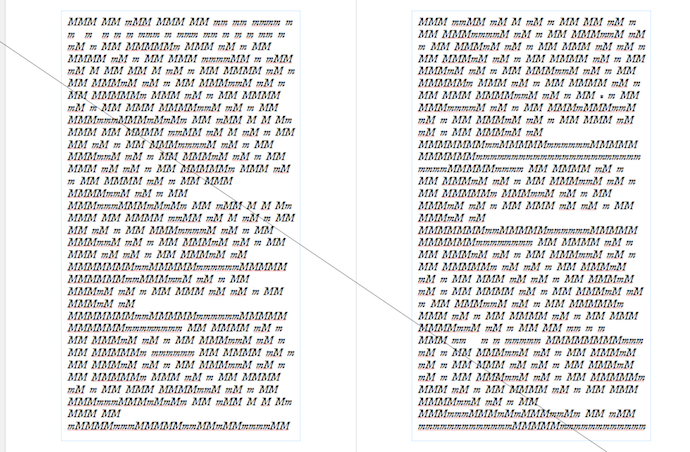
And Lonely Men Club is an elliptical text, not meant to be read as a diary or log of Zodiac’s daily goings-on. At the same time, I never set out to write a traditional narrative. In fact, it may take a while before Lonely Men Club becomes a pleasurable reading experience (and I put an emphasis on pleasurable since I could write an entire dissertation on the definition of pleasurable, alone). There is a chance, even, I must admit, that you, as reader, will see or find no merit in the text. And that is fine. It is your right. At the same time, if by some manner, one is able to prove that Lonely Men Club truly has no merit, I can still be fine with this. I say all of this since Lonely Men Club exists to challenge the very notion of the book. I, of course, also ask for some suspension of disbelief. The text is going to be a challenge for the reader seeking all answers. Lonely Men Club can be read in any order and can begin on any page (and can also end on any page). The text is made up of vignettes that paint the image of the shadow of a story / narrative. One word might mean one thing but then, when placed next to another word, might mean something completely different. Each word in a sentence is as important as the sentence itself, the rest of that page, the entire book. The line breaks in between sentences are themselves sentences
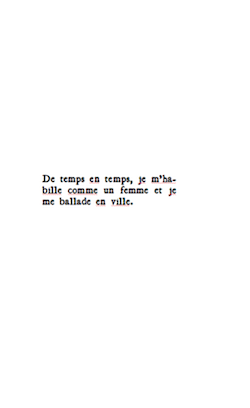 There are sections discussing the type of tea Zodiac is drinking. There’s other sections describing the colour of the sky for that particular evening in October (in Wyoming, or wherever else—all of this is generative). Zodiac will eat a particular type of fish. They will pray about a specific thing to a specific god. They will complain about something that is bothering them. Pretty much, the entirety of Lonely Men Club is presented in a manner that is not unlike the works of Kenneth Goldsmith or David Markson, in the sense that the text that is put onto paper is done in a manner that is exhaustive (almost to the point of ad nauseam). All of Zodiac’s actions and thoughts are chronicled. Nothing is wasted. The form and process of Lonely Men Club is the actual story. The weight of importance is equally distributed, as Lonely Men Club aims to fully explore, embrace & then break down the limits of language.
There are sections discussing the type of tea Zodiac is drinking. There’s other sections describing the colour of the sky for that particular evening in October (in Wyoming, or wherever else—all of this is generative). Zodiac will eat a particular type of fish. They will pray about a specific thing to a specific god. They will complain about something that is bothering them. Pretty much, the entirety of Lonely Men Club is presented in a manner that is not unlike the works of Kenneth Goldsmith or David Markson, in the sense that the text that is put onto paper is done in a manner that is exhaustive (almost to the point of ad nauseam). All of Zodiac’s actions and thoughts are chronicled. Nothing is wasted. The form and process of Lonely Men Club is the actual story. The weight of importance is equally distributed, as Lonely Men Club aims to fully explore, embrace & then break down the limits of language.
These days, we have e-books and audio books and physical texts. Process is just as important as the end result. Mostly though, you will find that process is abandoned or forgotten once result has been achieved. Lonely Men Club is 99% process and 1% result. What you are reading right now, whatever you want to call it: feature or diary or article, is just as important as the book itself, it is an extension of Lonely Men Club. I expect Lonely Men Club to be mistaken for poetry. Some may even believe it is a work of nonfiction or—much like the works of literature I admire most and continue to study—deemed unclassifiable. I want the reader to be in a trance. I want this sort of hypnosis effect to manifest itself as the reader continues to read the novel. Simply put, history repeats itself, over and over and over again. Nothing is new. Everything is old. Everything we think is new has already happened once before. Lonely Men Club is all about that. It embraces this ideal—this concept. And in the end, I can only hope a conversation naturally forms and continues to exist, long after the experience of Lonely Men Club is complete.